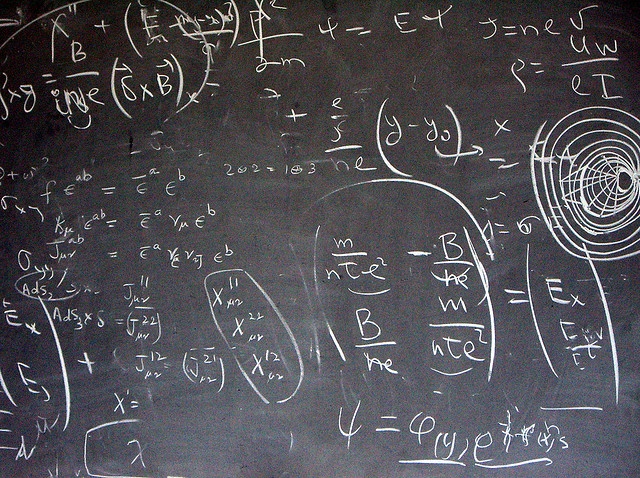
Orientation
Foundations are the durable ideas that survive across many topics. Learn them once and they pay off in mechanics, electricity and magnetism, quantum work, and in any field that uses models. On this page we build a compact toolkit. You will not memorize long formulas here. Instead you will practice seeing what matters, writing that choice down, and checking the answer in honest ways that do not depend on special tricks. The goal is not to be clever. The goal is to be clear and repeatable so other people can follow your path.
Each section below has long paragraphs you can read without heavy background. When you want more, open the worked examples and try a one page calculation. Use the notebook on the right to save lines that click for you. If a paragraph feels too dense, rephrase it in your own words and save that version. Theory improves fastest when you make the ideas your own rather than echoing mine.
Conservation laws
Energy, momentum, and angular momentum are the three big conserved quantities of introductory physics. Conservation statements are powerful because they ignore the messy path from start to finish and care only about what crosses the boundary of your system. If no relevant quantity crosses, the total inside stays the same. This is not a slogan. It is a calculation tool. You define the system, draw the boundary, list what flows in or out, and then write the balance. In many problems the balance gives the answer immediately, and if not it gives a clean constraint that makes the algebra lighter.
The most common mistake is a fuzzy boundary. Suppose a skateboarder rolls down a smooth ramp. If you ignore air and friction, mechanical energy inside your boundary stays constant and the conversion between potential and kinetic energy gives the speed lower on the track. Add friction and energy apparently leaks away. Where did it go. It moved to thermal energy of the board, the bearings, and the air just outside your boundary. If you enlarge the system to include those parts, total energy is still conserved. Problems that look like paradoxes are often boundary problems in disguise. State your boundary and conservation will look after itself.
Worked example - two carts and momentum
Two carts on a track stick together after a gentle collision. Cart A of mass 0.6 kg moves at 0.8 m s^-1 and hits cart B of mass 0.4 kg at rest. If the track is level and friction is small, momentum along the track is conserved. The total before is 0.6×0.8 which is 0.48 kg m s^-1. After the collision the combined mass is 1.0 kg, so the speed must be 0.48 m s^-1. Notice how fast this is compared with computing forces over time. If the carts bounced instead of sticking, you would add an energy statement and solve two short equations without ever drawing the detailed contact forces.
Symmetry and Noether’s idea
Symmetry means a change that leaves the essentials the same. Slide an entire experiment forward in time and the rules do not change. Rotate a frictionless setup around an axis and nothing special happens to the equations. Emmy Noether proved the deep link: each continuous symmetry gives a conserved quantity. Time shift symmetry ties to energy conservation. Space shift symmetry ties to momentum conservation. Rotation symmetry ties to angular momentum conservation. The connection is not just beautiful. It is a shortcut. Spot the symmetry and you know what cannot change unless an outside influence breaks that symmetry.
Worked example - symmetry check on a pendulum
For a small angle pendulum with no drive and little friction, the equations do not depend on the starting time. That time symmetry signals a conserved energy. Write energy at the highest point and at the lowest point and the speed emerges without solving the full differential equation. When small friction is included, the symmetry is only approximate and the energy slowly decreases. Thinking in symmetry tells you what should be constant and what should drift before you compute anything.
Reference frames and invariance
A reference frame is a choice of coordinates and clocks used to describe motion. In many classroom problems the lab frame is good enough. Yet your physical statements should not depend on who is watching from a steady moving train or from a balcony. Galilean relativity says that the laws of mechanics look the same in any frame moving at constant velocity. Velocities simply add. Special relativity sharpens this at high speeds and replaces the add rule with a consistent one that keeps the speed of light fixed. Invariance under changes of frame is a high standard. If a proposed equation changes its meaning when you switch frames, the equation is suspect.
Scales, units, and dimensional analysis
The quickest physics lives in the units. Before you compute, ask what kind of quantity the answer must be. If you want a speed, your final combination must carry length per time. This simple check catches algebra slips and also builds intuition. Many systems are controlled by pure numbers with no units at all, called dimensionless parameters. The Reynolds number compares inertial to viscous effects in fluid flow. The quality factor compares stored energy to energy lost per cycle in an oscillator. When a parameter is very small or very large, it suggests a clean approximation that turns a hard problem into an easy one.
Estimation is part of this culture. A quick order of magnitude check can guard against wild answers. If a bridge cable is off by a factor of a thousand in your calculation, the error likely came from a unit mismatch or a missing parameter. Good theorists estimate early, compute carefully, and then estimate again to see whether the final number sits in a reasonable range. This is not hand waving. It is quality control.
Worked example - dimensional guess for a pendulum period
A simple pendulum with length L and gravitational field g has a period T. If the amplitude is small, the only quantities likely to matter are L and g. Combine them to make time. The unique option is T proportional to the square root of L over g. The exact answer adds the factor 2π, but the dependence on L and g was already decided by units. This style of reasoning appears in fluids, optics, and astrophysics and is often enough to plan an experiment before any long derivation.
Approximation menu
Approximation is not a license to guess. It is a controlled way to track what matters. Common tools include small angle approximations for sin and cos when angles are measured in radians, linearization of a nonlinear rule near a stable point, and series expansions where a small parameter multiplies higher corrections. Another useful trick is separation of scales. If one process is very fast compared with another, you can often treat the fast variable as settled while the slow one changes. The art is to state your approximation so a critic can check whether it is appropriate for the regime you are studying.
Principle of least action
The action viewpoint says that a system follows the path that makes a single number called the action stationary compared with nearby paths. You build the action from a function named the Lagrangian that compares energy of motion with energy of interaction. The equations of motion fall out by taking a particular derivative procedure. The reward is a method that scales to constrained systems and to fields without inventing new forces each time. It also makes the link to symmetry precise because symmetries of the action produce conserved quantities directly.
Worked example - bead on a hoop with gravity
A small bead slides on a circular hoop. The Lagrangian uses the angle as the coordinate. Write the kinetic energy from the bead’s speed around the hoop and the potential energy from height in the gravitational field. The Euler Lagrange equation produces the same small angle equation as the force method but the action route handles constraints gracefully and reveals the energy conservation without extra work.
Fields and waves
A field assigns a value to every point in space and time. Temperature in a room is a field. The electric and magnetic fields are vector fields with directions as well as sizes. Maxwell’s relations tell how these fields change and how charges and currents create them. Waves appear naturally in those relations. Their speed in empty space matches the measured speed of light. Boundaries select which waves survive. A string fixed at both ends can only support certain shapes. Cavities, resonators, and optical fibers work for the same reason. Once you think in fields, many scattered facts become one story.

Oscillations and normal modes
The harmonic oscillator is the template problem of physics. Many small vibrations behave like it near equilibrium. Add damping to see how energy leaks to the environment, then add a periodic drive to watch resonance grow when the drive frequency sits near the natural one. In extended systems the motion can be expressed as a sum of simple patterns called normal modes. These modes do not mix when the system is linear, which makes analysis simple. The same language appears in quantum topics where the oscillator becomes a basic building block.
Waves and Fourier thinking
Any reasonable signal can be built from simple waves added together with different strengths. That is the idea behind Fourier series and Fourier transforms. It lets you switch viewpoint. If a problem is messy in time, look at it in frequency. Filters, diffraction patterns, and musical tones all make more sense when you describe them by which frequencies pass and which are blocked. The viewpoint is not one more trick. It is a common language for optics, acoustics, circuits, and data analysis.
Probability for physics
Measurements come with spread because the world is noisy and instruments have limits. Probability is the language we use to report that spread without pretending to know more than we do. The average tells the center, the variance tells how wide the results are, and the standard error tells how stable your average becomes when you repeat the trial many times. Error bars summarize this uncertainty so others can judge whether a theory agrees with data within the quoted limits. A plot of residuals the difference between data and model often shows patterns that a simple average hides. Learn to plot before you fit.
Quantum basics
In quantum work a system is described by a state from which you compute probabilities for outcomes. Amplitudes are the numbers you add before you square to get probabilities. That order matters. When two paths remain undisturbed their amplitudes add and create interference. When a reliable record of the path is made the interference fades. Some pairs of measurements cannot be made sharp at the same time because the order of operations matters. The uncertainty relation expresses that limit and is not about measurement sloppiness. Entanglement is a correlation so strong that the best description of the parts requires the whole.
From thermodynamics to statistics
Thermodynamics studies macroscopic quantities like pressure and temperature and relates them in laws that are hard to break. Statistical mechanics explains those quantities from the view of many microscopic states. Entropy counts how many micro arrangements match the same visible state. Temperature measures how energy changes when you allow that count to adjust. The bridge between the two subjects teaches a reliable lesson. Many stable laws arise not from the behavior of one particle but from the average behavior of very many. That is why similar mathematics appears in information theory and in some parts of biology and economics.
Problem solving toolkit
When a fresh problem arrives start simple. Draw the system boundary and list assumptions in the margin. Choose units and keep them visible. Look for symmetry and decide which conservation laws apply. Identify a small or large parameter to guide approximation. Try a limit where the answer is easy. If two different methods agree confidence rises. Put the final result in one plain sentence that says what changes if a parameter is doubled or cut in half. These steps turn a long solution into a short one that is easy to check and easy to share.

Practice prompts
Try these as one page exercises. 1. A ball rolls down a smooth track from height h. Use energy to find the speed at the bottom then check the case h equals zero. 2. A light string fixed at both ends is plucked. Explain why only certain frequencies are allowed and sketch the first three shapes. 3. An R C circuit is driven by a sinusoidal source. Describe how the output depends on frequency and what happens in the very low and very high limits. 4. Two slits send light to a screen. Predict how the pattern changes when one path is slightly longer. 5. Toss a coin fifty times. Plot the running average of heads and describe how quickly it settles. 6. Estimate the terminal speed of a raindrop using dimensional reasoning and explain why your answer is only an order of magnitude.